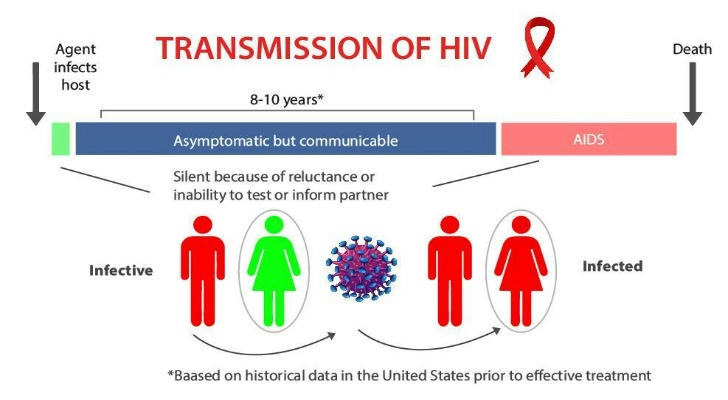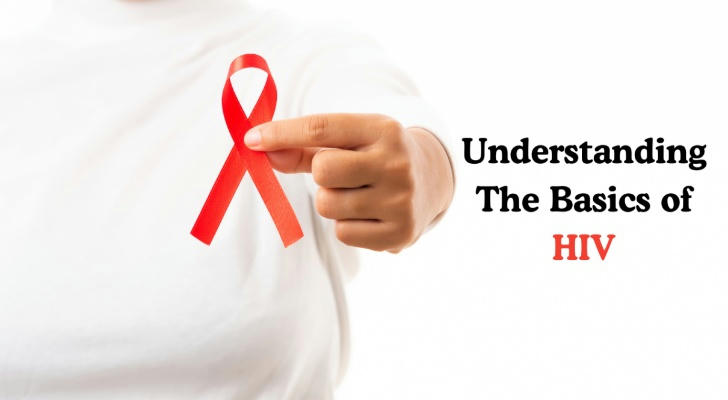Living With HIV: A New Perspective On Science, Treatment, And Life
HIV is a term that often causes fear, but it’s not as scary as we might think. By understanding the virus, we can better protect ourselves and others. Today, let's talk about HIV: what it is, how it spreads, how to prevent it, and how we should approach it in today’s world.

What is HIV?
HIV stands for Human Immunodeficiency Virus, which attacks the immune system, specifically the cells that help us fight infections. When HIV enters the body, it gradually destroys these immune cells, making it harder for our bodies to defend against other diseases. In short, HIV weakens our "defense system."
The good news is that while HIV is a lifelong condition, with the right treatment, people can live normal lives and no longer be at risk of spreading the virus.
How is HIV Transmitted?

HIV doesn’t spread just by any contact—it only transmits through specific methods:
Unprotected Sex: HIV can spread through sexual contact without a condom, whether vaginal, anal, or oral sex.
Sharing Needles: People who inject drugs and share needles are at risk of contracting HIV.
Mother-to-Child Transmission: An HIV-positive mother can pass the virus to her baby during pregnancy, childbirth, or breastfeeding.
Blood Transfusion or Organ Donation: While this is rare now, HIV can still be transmitted through unscreened blood or organ donations.
It's important to understand that HIV is not transmitted by casual contact like hugging, shaking hands, sharing meals, or using public toilets. It’s not airborne and cannot spread through saliva, sweat, or tears.
Symptoms of HIV: Can You Feel It?
Many people who contract HIV initially feel like they have the flu or a bad cold, with common symptoms such as:
•Fever
•Fatigue
•Swollen lymph nodes (in the neck or armpits)
•Skin rashes
•Sore throat
•Joint pain
These symptoms usually disappear within a few weeks. Most people may not experience obvious symptoms, and HIV can quietly "linger" in the body for many years. Even without symptoms, HIV continues to damage the immune system, so regular testing is still very important.
How is HIV Diagnosed?
The most reliable way to know if you have HIV is to get an HIV test. HIV tests are simple and can detect the virus with either blood or oral fluid samples. Many tests provide results in minutes, and home testing kits are also available for private use.
If the result is positive, it means you have HIV, but it doesn’t mean you have AIDS. With prompt treatment, the virus can be controlled, and progression to AIDS can be prevented.
Can HIV Be Cured?
Currently, there is no complete cure for HIV, but antiretroviral therapy (ART) has revolutionized the lives of those living with HIV. ART involves taking a combination of medications that control the virus, reducing the viral load in the body and allowing the immune system to recover. Many people, as long as they take their medication consistently, can reduce their viral load to undetectable levels.
The most encouraging part is that "undetectable = untransmittable" (U=U) has been proven true: if a person’s viral load is undetectable, they cannot transmit HIV through sex. This means that with treatment, HIV is no longer a risk for transmission.
How to Prevent HIV?

Preventing HIV is not complicated, and here are a few effective ways:
Use Condoms: Condoms are still one of the most effective ways to prevent HIV. Whether you're engaging in heterosexual or homosexual sex, using a condom reduces the risk of transmission significantly.
Take Pre-exposure Prophylaxis (PrEP): PrEP is a medication that people at high risk of HIV can take daily to prevent infection. It reduces the likelihood of getting HIV if exposed.
Post-exposure Prophylaxis (PEP): If you've been recently exposed to HIV (such as through unprotected sex or needle sharing), taking PEP within 72 hours can significantly reduce the risk of infection.
Regular Testing: If you are at high risk, regular HIV testing helps detect the virus early, preventing unnecessary spread.
Avoid Sharing Needles: For those who inject drugs, avoiding sharing needles is a crucial way to prevent HIV. Many cities offer needle exchange programs that provide clean needles to reduce transmission.
Don’t Let Stigma Affect Us
Despite the fact that HIV is now treatable, there are still many misconceptions and stigmas surrounding it. Many people, out of fear and ignorance, avoid contact with HIV-positive individuals or even discriminate against them. This misunderstanding and exclusion only make the situation worse, impacting patients’ mental health and their willingness to seek treatment.
Each of us can contribute to reducing the spread of HIV. By understanding the virus, empathizing with those infected, eliminating bias, and supporting early testing and treatment, we can work together for better health.
Summary: Living with HIV
HIV doesn’t mean life is over. Today, being diagnosed with HIV is no longer a death sentence. With proper treatment, people can live a healthy, fulfilling life. By understanding HIV, getting tested regularly, taking preventive measures, and, most importantly, eliminating social stigma, we can all take responsibility for our health and support those who need help.
